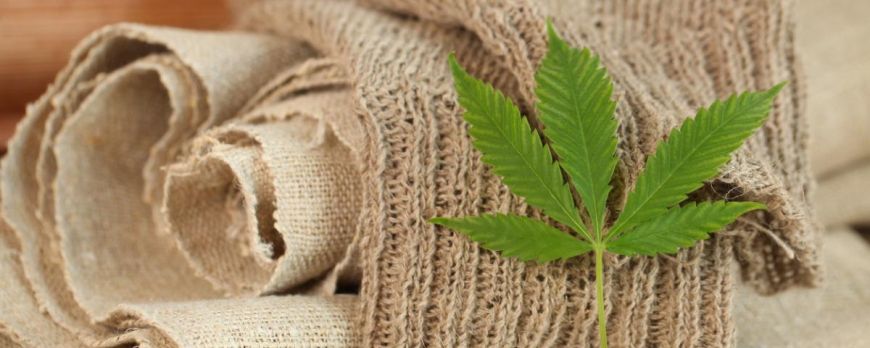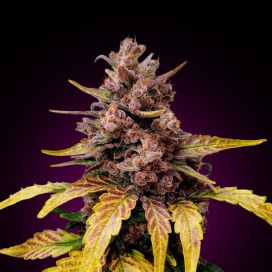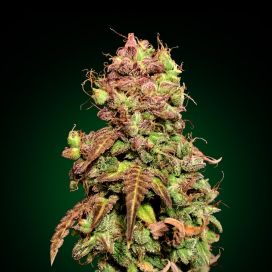
WHAT IS HEMP FABRIC AND HOW IS IT MADE?
You may have heard that it is possible to make clothes from hemp. Hemp fabric is a type of textile that is produced using fibres from the stems of the Cannabis sativa plant. This plant has been recognised as a source of unusually durable fibres for thousands of years. However, because of the plant's psychoactive properties, farmers are now prohibited from growing it. For thousands of years, Cannabis sativa has been used for two different purposes.
On the one hand, many generations of cultivators have grown it selectively because of its high content of tetrahydrocannabinol (THC) and other psychoactive chemical compounds called cannabinoids.
On the other hand, other cultivators have grown it to produce stronger and better textile fibres and have even deliberately reduced the levels of psychoactive cannabinoids.
As a result, two different strains have emerged - Cannabis sativa. It is a myth that hemp is made from the male Cannabis sativa plant and psychoactive marijuana is made from the female plant. In fact, most of the world's hemp crop is from female plants. However, female Cannabis sativa plants grown for textile purposes are very low in THC and usually have no pronounced buds.
The stems of the hemp plant consist of two layers - the outer layer is formed by rope-like bast fibres and the inner layer consists of a woody core. Only the outer layer of the stalk is used for textile purposes, the inner woody layer is usually used for fuel, building materials and animal bedding.
Once the outer layer is removed, it is processed to become rope or yarn. Hemp rope is so strong that it was once the rope of choice for sailors. This is the reason hemp is also a commonly chosen material for clothing, because it outperforms cotton and synthetic textiles in most ways.
However, because many laws around the world do not distinguish between THC-rich marijuana and hemp, which has virtually no THC, the global economy is not reaping the benefits of hemp to the extent that it could. Instead, people do not understand what hemp is and stigmatise it as a drug. However, more and more countries are adopting the mass cultivation of industrial hemp.
Once processed into fabric, hemp has a similar texture to cotton, but looks like canvas. Hemp fabric is not susceptible to shrinkage and is highly resistant to pulling. Because the fibers of this plant are long and strong, hemp fabric is soft yet durable. While a typical cotton t-shirt lasts at most 10 years, a hemp t-shirt can last double or triple that.
In addition, hemp is lightweight, which means it is a highly breathable fabric and does not retain moisture. It is easy to dye and is highly resistant to mildew and harmful microbes. Hemp fabric softens with each wash, but without its fibers degrading even after dozens of washes. Because it is easy to produce and its properties are good, this fabric is extremely suitable for textiles.
How are hemp textiles produced?
As a crop, hemp grows well in mild climates with high humidity, and Cannabis sativa plants are usually ready for harvest in mid-August. Most plants used for hemp fabric are harvested with a special machine and then left to mature in the field for 4-6 weeks. This is done to facilitate the removal of pectin from their composition.
They are then made into bales, just as is done with hay. Next, the husk of the plant is separated from the pith, the impurities are removed and pulp is produced for the paper products. Steam treatment produces the fibres, which are then used for textiles. In fact, the process of creating fibres for other textiles is not very different.
What is hemp textile used for?
The main use of hemp fabric is the production of clothing. Historically, this type of fibre was widely used because it was new. Today, there are many people around the world who like this fabric because of its useful qualities, not because of its connection to marijuana. You can find all kinds of hemp clothing - dresses, skirts, pants, jackets, t-shirts and children's clothes. Its wear resistance is very high and this makes it a preferred choice for all kinds of clothing. Most cotton t-shirts start to fray after a few washes, while hemp t-shirts retain their shape and integrity for years. This is why hemp is now also used for tablecloths, dish towels and even upholstery.
Towels, for example, need to be highly absorbent to be good. Even sheets and bed linen are made from hemp, but unfortunately they are not as soft as cotton. However, if you get a hemp blanket, it will serve you faithfully for years.
An interesting fact is that hemp textiles are not usually the only fabric used to make a hemp product. Cotton, silk or some other type of thread is used to further refine the properties of the textile. This makes it softer and more durable.
Where is hemp grown and processed the most?
It may surprise you, but the most such textiles, and therefore the most plants, are grown in China. But hemp seeds are everywhere. Nearly 70% of hemp is produced in China. However, due to weak labour laws and environmental regulations, it is not clear whether the hemp produced there is environmentally sustainable and non-toxic. Furthermore, only a small proportion of the hemp produced in China is made into cloth; the majority is used to produce fuel, paper or other industrial products.
France is the next largest producer of the crop, followed by Austria, Chile and the United Kingdom. In total, more than 30 countries worldwide produce industrial hemp.
Leave a CommentLeave a Reply
Blog categories
Blog search
Latest Comments


